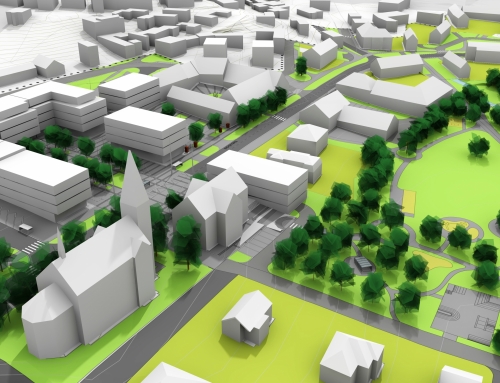Isyour church growing to the point that you foresee a day in the next few years that your facilities can no longer support any additional people? I’ve discovered that most pastors and church leaders do not realize the time it takes to plan new facilities or the steps to get there.
For this reason, I have identified 10 Fundamentals that I believe all churches should follow to successfully develop their real estate resources for maximum ministry effectiveness. There are many more principles that could be discussed, but this is an executive level primer that I hope will be helpful as you begin your own conversation.
This is Part Three of a Ten Part Series designed to give you a springboard for starting a conversation with your leadership as you consider how you will approach developing a new campus, multi-site, or expanding/renovating your existing campus.
Drawing on 30 years of successfully developing large, complex building projects I help churches and other non-profit organizations as their advocate to navigate the complexities of planning, funding, and developing their campuses.
Each Post considers one of the following 10 Fundamentals:
- Real Estate Strategy
- Resource Assessment
- Vision Alignment
- Land Planning
- Funding Strategy
- Congregational Support
- Project Design
- Project Schedule
- The Right Team
- The Right Leadership
If the development of a new campus or expanding your existing facilities does not align with the unique overall Vision, Mission, and Strategy of your church you may have built a nice space, but it is not good stewardship.
In this post, we look at Fundamental Three; Vison Alignment.
If you are just joining the series, I encourage you to go back and start with Fundamental One to get the most benefit.
The development of a church campus, or a major expansion of an existing campus, is a complex process. All too often, church leaders mistakenly think the first step is hiring an Architect. As a developer, we would never hire an Architect until we had first done our own homework and conceived a compelling Vision, analyzed the market & demographics, considered our resources, and developed a well vetted proforma. Only then would we have the knowledge necessary to determine the best Architectural firm for the Project, and have the Vision that could be conveyed to the design Team who would bring their creativity and skills to bear as we begin the early concept drawings.
If the development of a new campus or expanding your existing facilities does not align with the unique overall Vision, Mission, and Strategy of your church you may have built a nice space, but it is not good stewardship. A building is just a building if it does not enhance your ability to transform and engage people to give of their time, talent, and treasure to do ministry and accomplish your Vision; whatever it may be.
Vision alignment is only attained after the process of assessing where you are now with respect to your ministry facilities, and where you need to go to accomplish your church’s overall Vision.
The goal of this part of the process is the development of a “Campus Vision”. A great Campus Vision must align with the overall Vision and Mission of your church and match your real estate strategy. Until the Campus Vision is clear, it is premature and costly to advance to the next step of planning a new campus or any sort of campus expansion.
I know of cases where church building committees have hired an Architect before developing their Campus Vision and gone straight to Architect facilitated “design charettes” (when done correctly, this is a helpful process where the Architect develops early concepts and sketches in front of a committee). People on the committee become excited at the “really cool” concepts the Architect develops and, before you know it, initial sketches become hundreds of thousands of dollars worth of design drawings that may be beautiful and exciting but don’t align with the overall Vision of the church. Unfortunately, excitement turns to disappointment when they discover their error only too late.
A word about Architects; we have worked with a number of firms that are really great at what they do. They can make all the difference in helping our clients achieve their Vision in creative ways and help solve all sorts of challenges. But they are going to follow the direction of leadership and it is unwise to leave that responsibility of Vision Alignment to your Architect.
I have said this before, but it bears repeating. You will be asking your “stakeholders” to support your Vision so you will of course want to be confident that it aligns with your overall Vision, Mission, and Strategy.
If you are considering this journey and could use some guidance we would love to help! Also, be sure to check back for Part 4 where I will discuss Land Planning.





